Ever wondered how outdoor curtains stay straight? Many homeowners want to add curtains to their yards but don’t know where to start.
Wire systems offer a simple way to hang outdoor curtains. This method works well for different spaces and weather conditions. The installation process is flexible and can fit most outdoor layouts.
You don’t need professional help to install curtain wires. The process takes just a few hours with basic tools. Most homeowners can complete this project in one weekend.
This blog will guide you through the process of hanging outdoor curtains on wire step by step.
You’ll learn about materials, tools, and techniques that work best for outdoor spaces. The right approach makes your outdoor area more functional and enjoyable.
Why Hang Outdoor Curtains?
Outdoor curtains serve multiple purposes in your backyard or patio area. They create instant privacy from neighbors and block unwanted views. Wind protection is another key benefit that makes outdoor dining more pleasant.
Sun control helps reduce heat and glare during bright afternoons. Curtains also define separate areas in large outdoor spaces, making them feel more organized and functional.
Here are the main benefits:
- Privacy protection – Block views from neighbors and streets
- Wind barriers – Reduce strong breezes that disturb furniture
- Shade creation – Lower temperatures in seating areas
- Space definition – Separate dining from lounging zones
- Weather shield – Light rain and dust protection
- Style addition – Add color and texture to plain spaces
What You Need to Know First?
Before starting your curtain wire project, several important factors will affect your success. Planning ahead saves time and prevents common installation problems.
Wire installation requires solid mounting points on both ends. Check if your posts, walls, or pergola beams can handle the weight and tension. Weak surfaces will fail under load and create safety issues.
Measure the distance between mounting points before buying wire. Add extra length for connections and adjustments at each end. Most installations need 10% extra cable length for proper setup.
Consider wind patterns in your area when choosing materials. Strong winds put more stress on the wire system and curtains. Coastal areas face higher wind loads than protected spaces.
Check local building codes if you’re adding permanent structures. Some areas have rules about fence height and property line distances. Contact your local building department if you’re unsure about regulations.
Choosing the Right Wire
The correct wire makes all the difference in the performance and longevity of your curtain system. Different materials and sizes work better for specific outdoor conditions and installation needs.
Here are your main wire options:
- Stainless steel cable – Best overall choice that resists rust and handles weather changes
- 1/8 inch (3mm) thickness – Supports most outdoor curtains without sagging
- 3/16 inch (5mm) thickness – Better for heavy fabrics or spans over 10 feet
- Vinyl-coated cable – Prevents fabric damage and looks cleaner
- Galvanized steel cable – Lower cost option, but may rust in wet climates
Stainless steel cable costs more upfront but lasts longer than other materials. Vinyl coating adds extra protection in harsh weather areas with frequent storms or high humidity.
Preparing Your Outdoor Space for Curtain Installation
Proper preparation ensures your curtain wire system installs smoothly and lasts longer. Taking time to prepare the space prevents delays and installation problems.
1. Clean and Inspect Your Mounting Areas
Clean the mounting surfaces before starting the installation. Remove dirt, old paint, or debris that might interfere with drilling. Check for any damage or weak spots that need repair first.
2. Determine the Right Height and Position
Mark the exact height for your curtain wire. Most outdoor curtains hang 8-10 feet high for good coverage and clearance. Use a level to ensure both mounting points are at the same height.
3. Check for Obstacles and Utilities
Look for underground utilities before drilling into concrete or stone surfaces. Call 811 for free utility marking in most areas. Check for electrical wires or plumbing that might be hidden in walls.
4. Test Your Equipment
Test your drill bits on scrap material first. Masonry and metal surfaces need specific bit types for cleaning holes. Make sure your drill has enough power for the mounting surface material.
Tools and Materials Checklist
Having the right tools makes installation faster and safer. This project requires basic hardware and simple tools for hanging outdoor shades or curtains on cable systems.
| Tools Needed | Materials Required |
|---|---|
| Drill with bits | Outdoor shade or curtains |
| Pliers | Vinyl-coated cable rope |
| Scissors or a cable cutter | Turnbuckles (2 pieces) |
| Measuring tape | Screw eye hooks (4 pieces) |
| A pencil for marking | Cable clamps/rope clamps |
7-Step Process to Hang Outdoor Curtains with Wire
Cable installation follows a specific sequence for best results. Each step builds on the previous one to create a strong system that holds your outdoor shade securely.
Step 1: Cut the Cable Rope
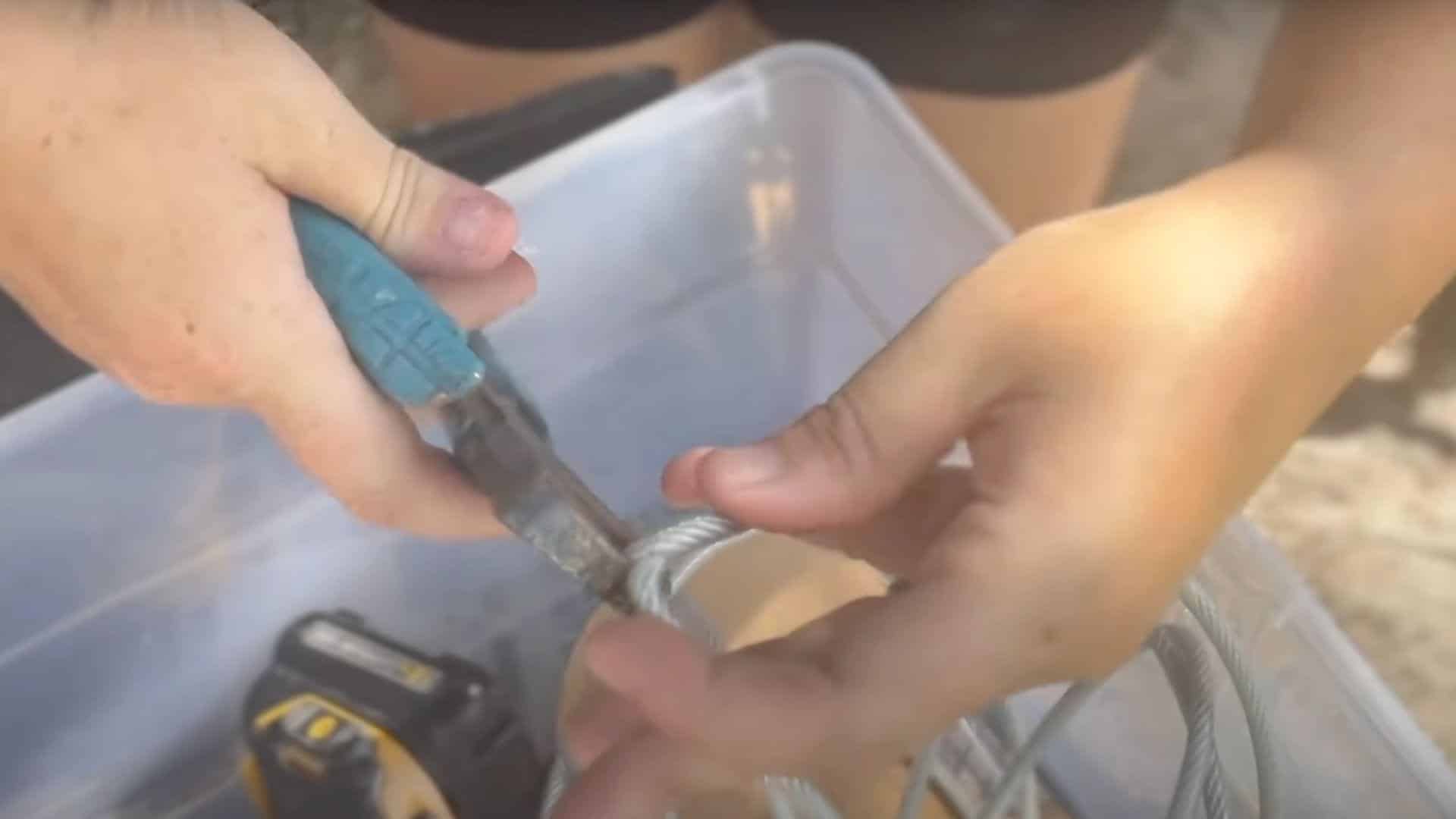
Measure the distance between your mounting points and add extra length for connections. Cut the vinyl-coated rope, allowing additional material for adjustments and potential mistakes.
Always cut more rope than needed rather than coming up short. Extra length can be trimmed away after the installation is complete and properly tensioned.
Step 2: Thread the Clamp and Turnbuckle
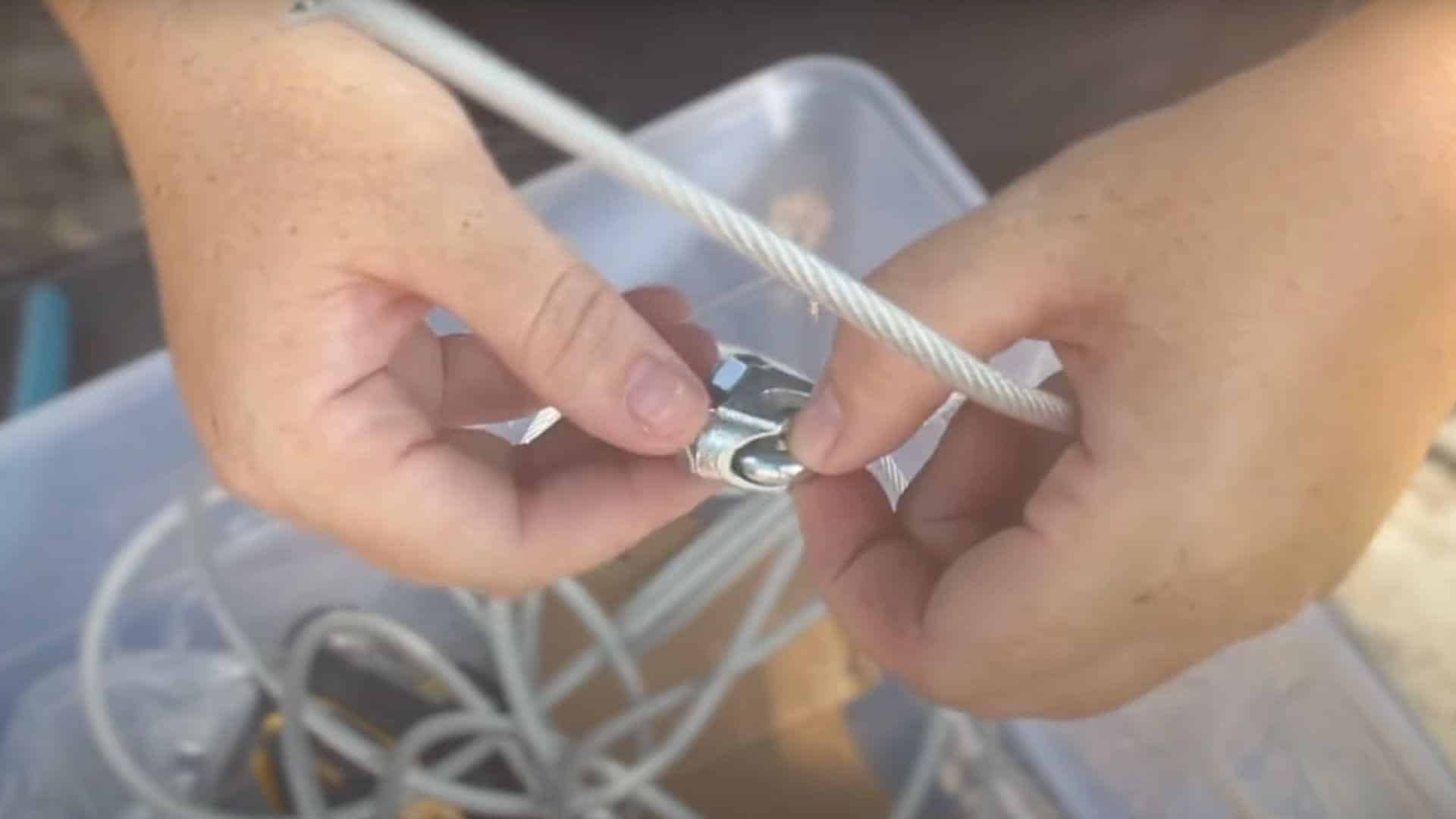
Slide a cable clamp onto one end of the cut rope. Attach the turnbuckle to this end of the cable system.
Feed the cable back through the clamp to create a secure loop. This connection will hold one end of your shade system in place.
Step 3: Tighten the Clamp
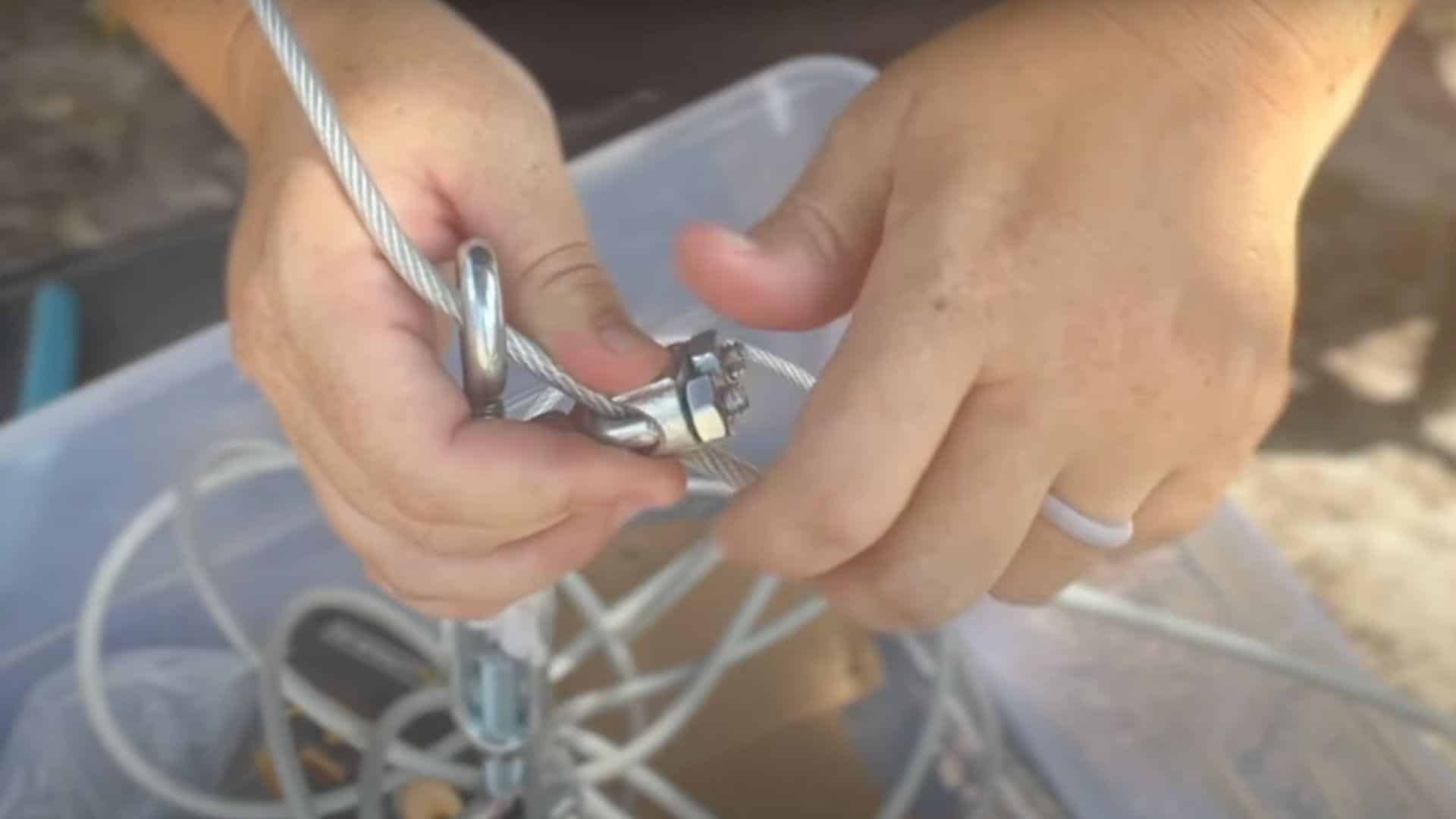
Use pliers to fully secure the clamp around the cable. Hand tightening alone won’t provide enough grip for outdoor use.
Make sure the clamp grips the cable tightly so it won’t slip under tension. A loose connection will cause the entire system to fail.
Step 4: Pre-Drill Holes for Screw Eyes
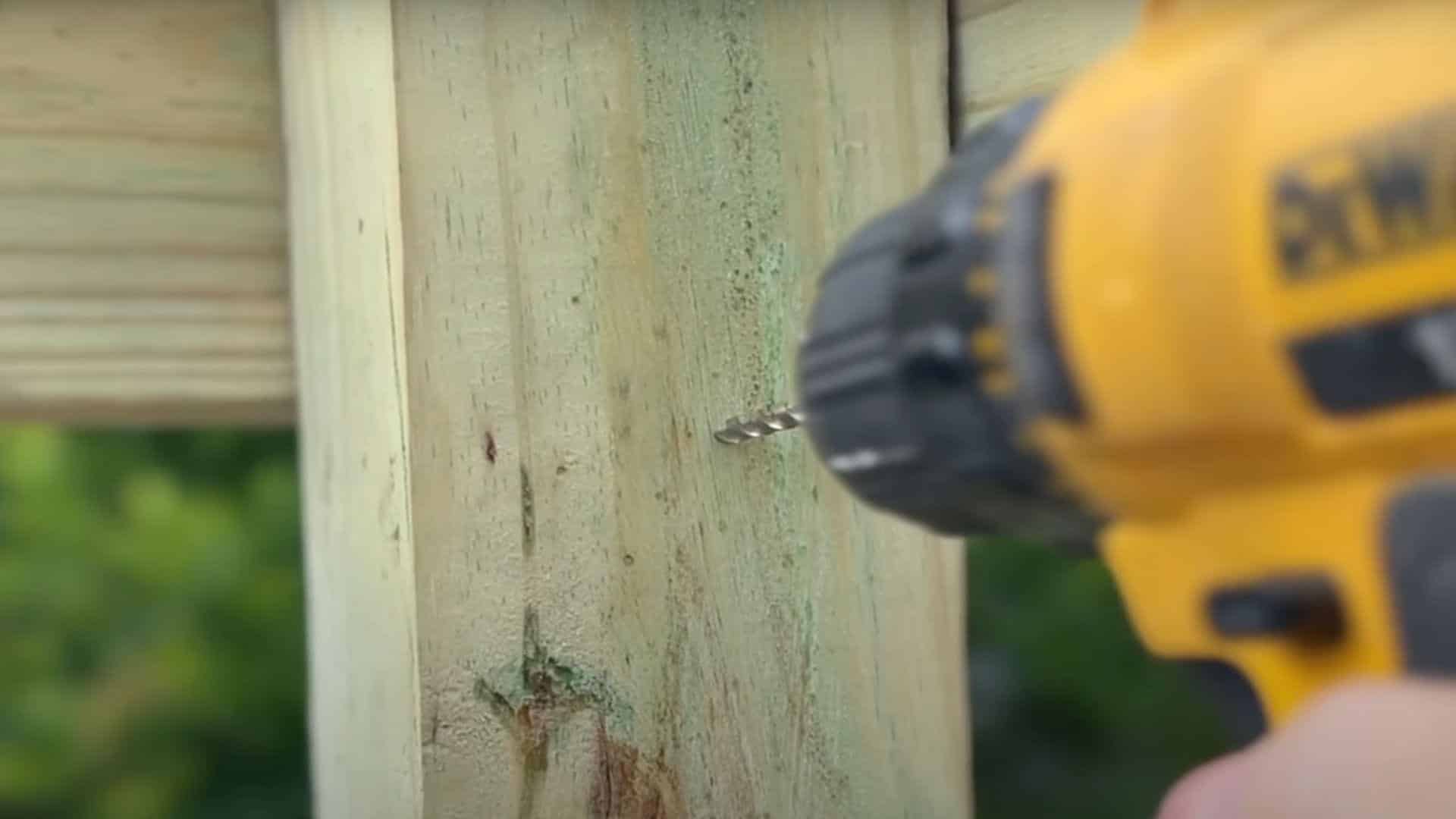
Mark the locations where screw eyes will be installed on your pergola or mounting surface. Use a level to ensure all marks align properly.
Drill pilot holes at each marked spot to prevent wood splitting. The holes should be slightly smaller than the screw eye diameter.
Step 5: Install the Screw Eyes
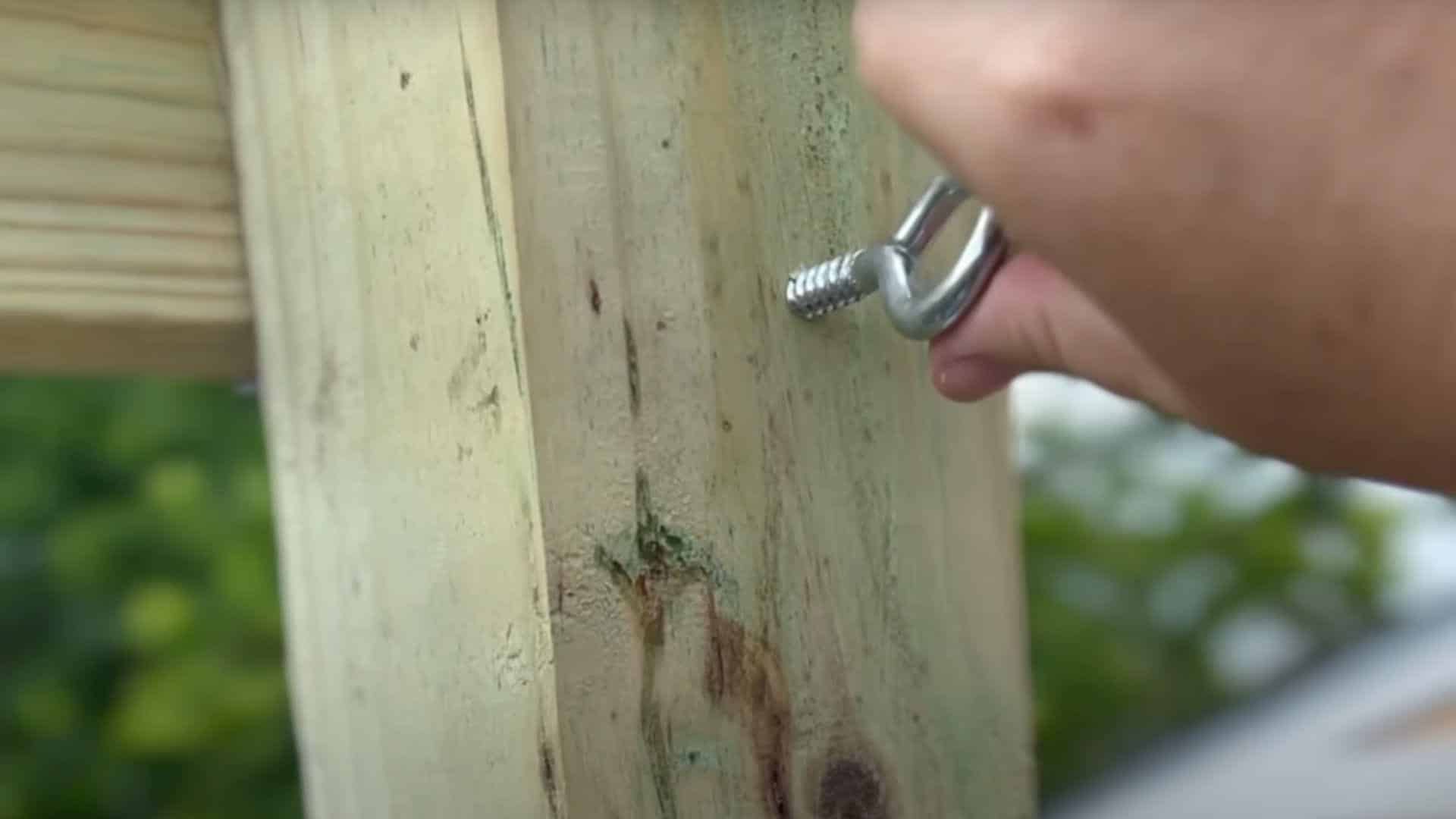
Screw the eye hooks into the pre-drilled holes using steady pressure. Install two eye hooks on each side for stable mounting.
Turn each screw eye until it sits flush against the mounting surface. Test each one by pulling gently to check security.
Step 6: Attach the Cable and Hang the Shade
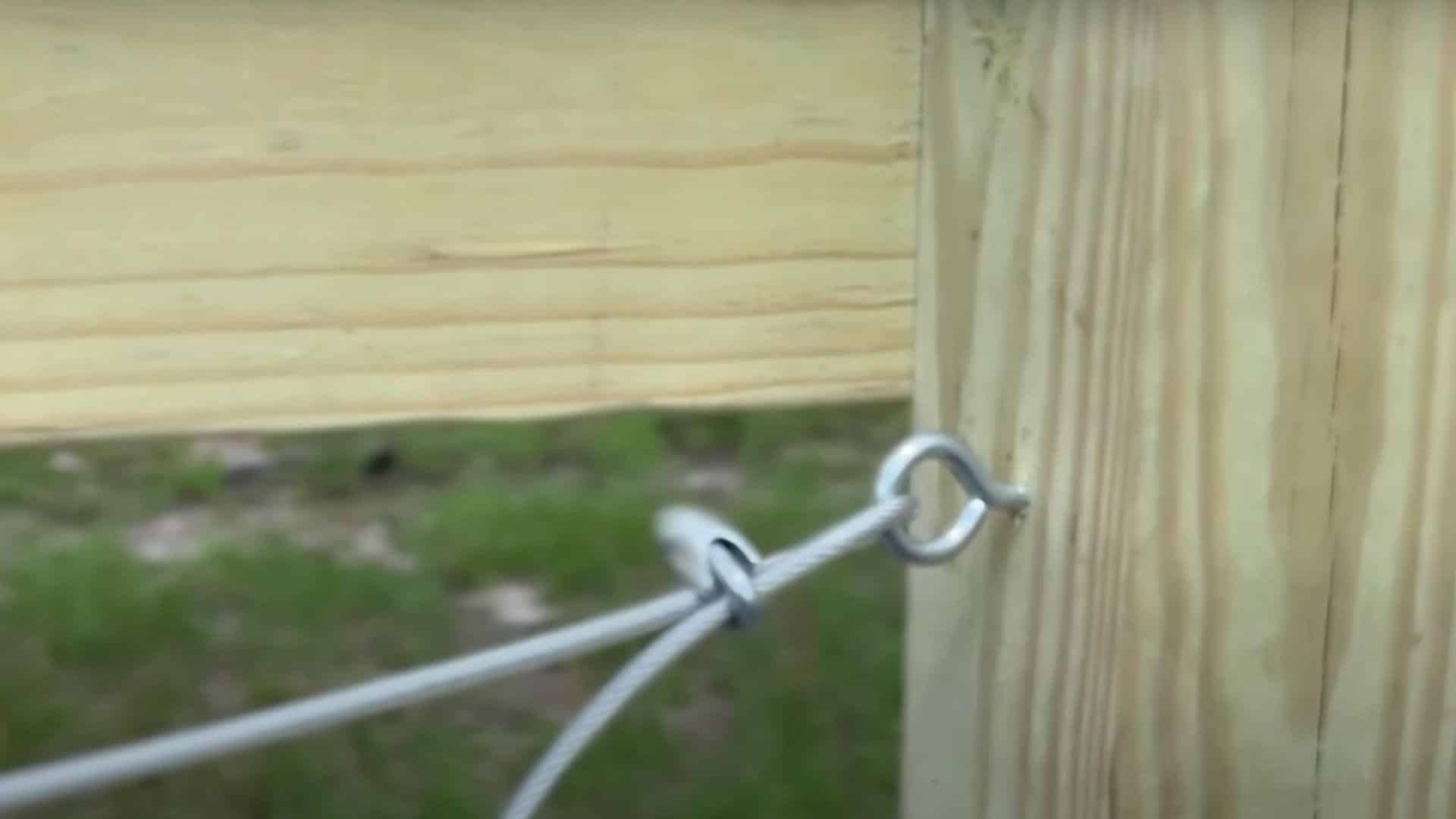
Hook one end of the cable assembly to the first set of eye hooks. Run the cable across the space to the opposite mounting point.
Thread the free end through the second clamp and pull tight by hand. Remove as much slack as possible before final adjustments.
Step 7: Adjust Tension and Trim Excess Rope
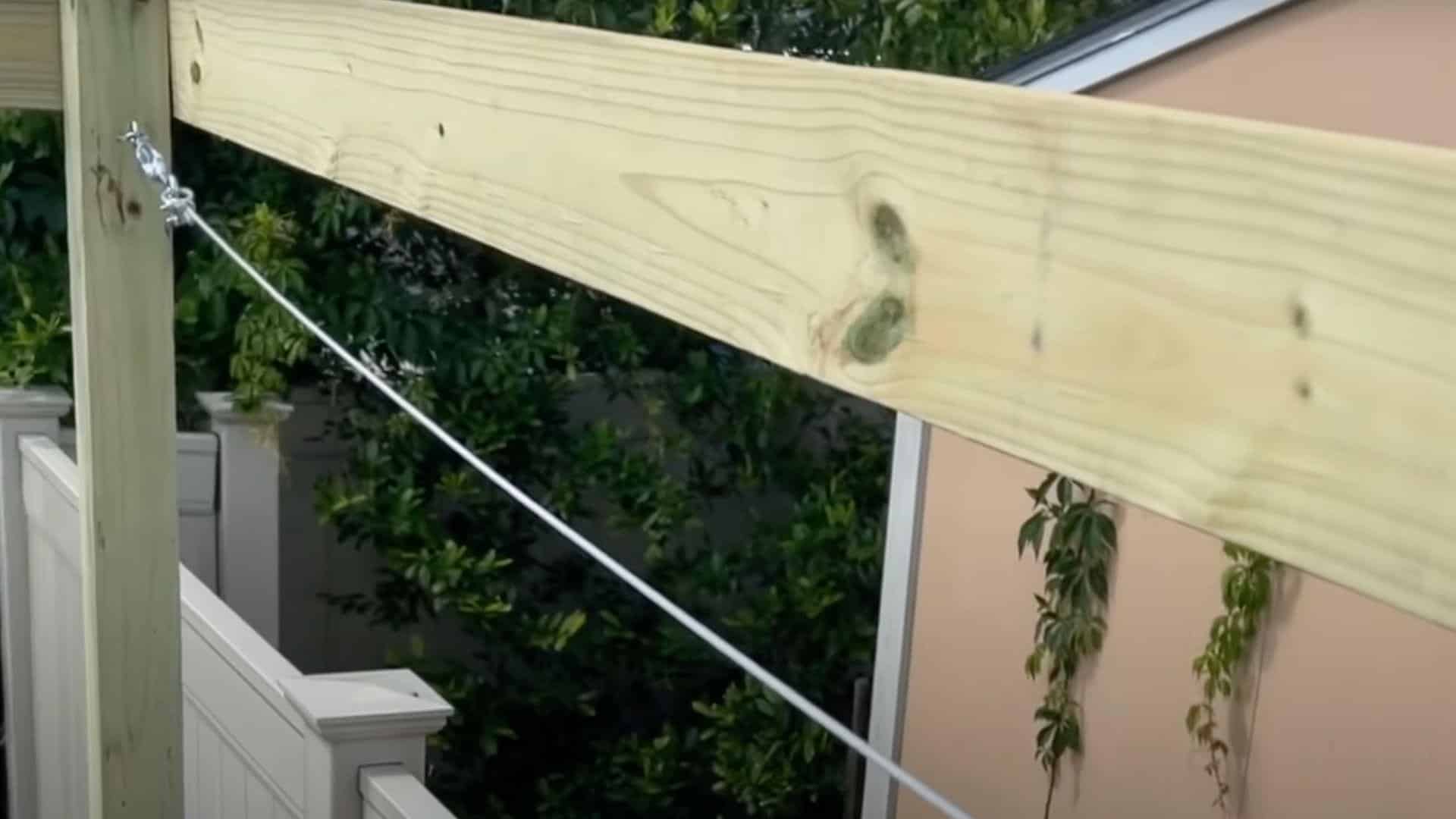
Use the turnbuckle to remove remaining slack from the cable system. Turn it slowly until the shade hangs straight and secure.
Cut off any extra rope using scissors or cable cutters for a clean appearance. Check the final installation to ensure all connections are secure and test the system gently.
Video Tutorial
Check out the video for more insights! Watch a step-by-step demonstration of how to hang wire for outdoor curtains.
Decorating Tips to Consider For Hanging Outdoor Curtains
Once your curtain wire system is installed, simple decorating touches can make your outdoor space look more polished and inviting. These small additions create significant improvements without major changes.
Simple ways to enhance your curtain setup:
- String lights – Add LED lights above or below the wire for evening ambiance
- Color mixing – Combine solid and patterned curtains for visual interest
- Fabric tiebacks – Use rope or fabric ties to hold curtains open in calm weather
- Top valances – Add short fabric pieces to hide wire and mounting hardware
- Coordinated colors – Match curtain colors with existing outdoor furniture
- Seasonal changes – Switch lighter fabrics in summer and heavier ones in cooler months
These decorating ideas work with any wire system and most curtain styles. Choose options that fit your outdoor space size and weather conditions.
Common Problems and Quick Fixes
- Wire sagging – Tighten turnbuckles gradually until the wire straightens.
- Curtains bunching – Add more rings or grommets for smoother movement.
- Hardware loosening – Check and retighten screws every season.
- Fabric fading – Choose UV-resistant materials or add fade protection spray.
- Wind damage – Install windscreen panels or remove curtains during storms.
- Rust spots – Replace galvanized hardware with stainless steel options.
Final Thoughts
Wire-hung outdoor curtains give you control over privacy and comfort in your outdoor space. The installation process is straightforward with proper planning and tools.
Quality materials cost more upfront but save money over time. Stainless steel wire and proper hardware last for years with minimal maintenance.
Start with one section to test your technique before doing larger installations. This helps you work out any problems on a smaller scale.
Your outdoor space will feel more private and comfortable with well-installed curtain systems. Take time to do the job right for the best long-term results.
Have you installed outdoor curtains before? Share your experience and tips in the comments below to help other readers.
Frequently Asked Questions
How Do You Make Outdoor Curtains Windproof?
Use heavy-bottom pipes for weight and stability. Add tie-down straps to secure curtains. Choose thick fabrics that resist wind damage up to 70mph speeds.
How to Hang a Tarp Like a Curtain?
Attach grommets to the tarp edges. Use eye bolts or hooks on your structure. Connect the tarp using carabiners or clips for easy hanging.
How Much Weight Can Curtain Wire Hold?
Standard curtain wire systems support up to 11 pounds safely. This capacity works well for most outdoor fabric curtains and light decorative panels.


